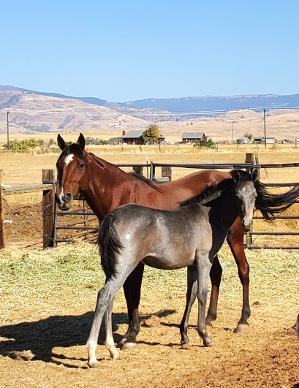
Rroyale Ravenn
Pedigree Information
Rroyale Ravenn’s sire
is the classic Crabbet silver 14.2hh stallion Comar Gai Rifraff. In Comar Gai Rifraff's limited show
career, he was presented in 2006 at the Utah Autumn Classic Region 7 show and
placed 2nd in the Arabian Stallion Breeding, and 2nd in the Arabian Stallion
Breeding AT. While at home Comar Gai
Rifraff is used as a ranch horse working cows and giving children rides. He
is known to be a broodmare sire producing outstanding daughters with excellent
legs and minds. His measurements are 8 inch cannons, 58 inches tall, and a 69 ½
inch heart girth.
Comar Gai Rifraff's sire, LA Shaman, is Champion
of many northwest Halter, Native Costume, and Driving classes. He was described
as being a creature to behold. His beauty and charisma caused a person to stop
in their tracks, and even forget to breathe.
LA Shaman's
sire, Gai Parada+++/ is the only stallion to ever win a National
Championship in Performance prior to a National Championship in Halter. He is
1974 Canadian National Champion Pleasure Driving, 1974 US National Champion
Pleasure Driving, 1975 Canadian National Top 10 Stallion, and 1977 US National
Champion Stallion. Gai Parada+++/ is a Legion of Supreme Honor and
Supreme Merit award winner. Gai Parada+++/ was foaled at Gainey
Fountainhead Arabians in Owatonna, MN. He did some growing up at the Minnesota
ranch before being sent to the Gainey ranch in Santa Ynez, CA. Each time Mr.
Gainey looked the colt over, he was even more sure he had made the right
decision to own him. Gai Parada+++/ pleased his artist's eye and fit his
ideal of extreme refinement, intelligence, delightful disposition, elegance,
and an exciting overall desert type. These qualities are still cherished today
by breeders who continue to utilize the Gai Parada+++/ blood. Sterling
White, who trained and showed Gai Parada+++/ to his 3 National
Championships, found him to be willing and responsive. Parada quickly figured
out exactly what was expected of him, and then tried very hard to perform.
"The communication between us became so sensitive that I could just look
at him and he knew what I wanted," Sterling recalls. They started with
performance training; Pleasure Driving turned out to be his forte. Sterling
remembers conditioning him in the buggy 6 miles per day, 6 days a week, as part
of his Driving training. In the show ring, judges concurred with Mr. Gainey's
assessment of Gai Parada+++/, as he won Championships and Reserves in Pleasure
Driving and English Pleasure. When Gai Parada+++/ was 6, he impressed
both the judges and the crowds at the 1974 US and Canadian Nationals, and he
took home 2 National Championship Pleasure Driving titles. Daniel J Gainey took
over the operation of Gainey Fountainhead Arabians in 1975 when his father
became ill. Dan recalls, "I just knew Gai Parada+++/ was a great
horse, and soon after I took over, I decided he was good enough that we should
put him on the campaign trail. He ranked up a slew of Championships and
Reserves and finished off 1975 as a Canadian National Top 10 Stallion. In 1977,
Lady Anne Lytton judged him Supreme Horse of the Minnesota All-Arabian Show.
And sure enough, he went all the way, becoming the 1977 US National Champion
Stallion. With 3 National Championships, Gai Parada+++/ retired to the
Santa Ynez ranch to further his career as a breeding stallion. This is where
Parada really left his mark on the Arabian world. 6 Parada foals were born in
1972 -- 3 colts and 3 fillies -- 4 of them bred by Daniel C Gainey. He tried
Parada with 4 of his choice mares: Gai-Gay-Ferzona (Ferzon x Arachne
by Desmoin), Gavrelle (Ferzon x Gajala by *Raffles),
Galatia (*Royal Diamond x Galata by Ferneyn), and Ferzona
(Ferzon x Raffwe by Raffey). Marianna Hannah of
Mountain Center, CA, sent her Comet daughter *Pallada (x Pandora
by Wielki Szlem), and Mr. and Mrs. Raymond D Anderson of Rancho Palos
Verdes, CA, sent Giralda (Regis x Joraba by Al Farabi).
5 foals were born in 1973, 12 in 1974, 21 in 1975, and 37 in 1976. The numbers
increased each year thereafter. In his lifetime Gai Parada+++/ sired 459 foals.
Gai Parada+++/ was sired by the great stallion Ferzon.
Ferzon was bred by Frank McCoy and foaled at the same time as Fadjur on
the McCoy Ranch. McCoy listed both stallions for sale with Fadjur's price at
$700 and Ferzon's price at $10,000, not dreaming anyone could come up
with that kind of money during that time. McCoy then showed Ferzon in
1953 at the Palm Desert, CA First Annual All Arabian Show to Reserve Champion
Stallion. At that same show Ferneyn, Ferzon's sire, took Grand
Championship. Moneyna, the dam of Ferneyn, was named
Reserve Champion Mare, while Hasa, a half-sister to Ferneyn by Ferseyn,
was the Grand Champion Mare. That same year Ferzon also won the Long
Beach, CA Yearling Colt Championship, San Diego, CA Desert Arabian Association
Yearling Colt Championship (again he placed 2nd to his own sire Ferneyn
in the Stallion Championship). In August of 1953, Ferzon was Reserve
Champion Yearling Colt with Fadjur placing 4th. In September of 1953 Ferzon
was the Champion Yearling Colt at the Los Angeles County Fair. Then came Daniel
Gainey, Sr, with $10,000 to purchase Ferzon and to produce a distinctive
look to Arabians that many people now call the Gainey-look. One of the most
popular teams of horse and rider ever, Harvey Ellis and Moneyna were famous for his exhibitions of riding her with no bit,
no headstall, no head equipment of any kind. Among their many show credits were
Champion Mare and Grand Champion, Pomona 1948 at 11 yrs old, and Reserve
Champion, All-Arab Show Palm Desert 1953 at 16 yrs old.
Moneyna traces in tail female to
the famed war mare *Wadduda. Rroyale Ravenn carries 9 crosses
to *Wadduda. *Wadduda was presented to Homer Davenport as a gift by Achmet
Haffez. *Wadduda had been for
several years the favorite personal mare of the Hashem Bey, and a gift of him
to Achmet Haffez. On Davenport’s first meeting with her, ridden by Ali, eldest
son of Achmet Haffez, in a moment into the courtyard she came tearing towards
them, all afire, bouncing tassels, blue beads in her highly carried tail, such
hock action, and her eyes fairly sparkled. Her name in Arabic has meaning of
love/affection. Achmet Haffez in an emotional voice said that when you speak
her name it shall bear witness of his regard and the gift and acceptance will
be the foundation of their friendship and brotherhood without end. A child of
the desert she was. It is said that she did not seem to like the confines of
her life in town. Davenport recounts the evening of their departure from
Aleppo, he riding her. Over the dirt and rocky road they rode, she fretted.
Davenport felt that perhaps it was the strange rider and clothes. Then just at
sunset, they came to the edge of the desert. *Wadduda stopped, as if paying tribute to the closing day. Salat
Al-Maghrib, sunset prayer. Then, with a quick toss of her head she began to
cavort and play. He settled deep in the saddle and let her frolic. Finally, she
stopped short, snorted, and broke into a gallop with a delightful spring. It
was a return home for her, the call of the nomadic life, of raids and races,
open air under the canopy of stars, as opposed to the confines of her corral in
town. Ears alert, she pranced, eyes blazing with intense satisfaction.
Davenport said that during this, he too had been carried back to his boyhood
dreams and fantasies, was surprised to find his cheeks wet; he had been crying
without being aware of it, realizing then who and what she was and what she
meant to him. Such was the true *Wadduda,
mare of the desert. One of *Wadduda’s
famed exploits was a ride in pursuit of a caravan from Iskanderoon to Aleppo,
some 106 miles in 11 hours (a feat equal to The Tevis Cup Ride in time and
distance) and prior to that feat to have had a pastern damaged in war/raid; she
is also recorded as bearing lance wound scars on neck and shoulder. Gladys
Brown Edwards of *Wadduda states
that perhaps plain headed she may have been, but she was neither coarse nor
common, and was a mare to be proud of. ***from
*Wadduda ‘The Great War Mare’ by Jack Kenning
Gai
Parada+++/'s granddam, Fersara,
was Pacific Coast Champion Mare 1952, 1953 and Reserve Champion Mare 1954.
NEVER OUT OF THE RIBBONS - 27 Classes (21 Blues). 3 time Grand Champion -
Pomona Fall Show. Permanent Winner - Kellogg Challenge Trophy. Fersara
was considered The Champion Mare, and was Always The Horse To Beat.
Comar
Gai Rifraff carries many lines to Azraff. Azraff was a sire
of numerous winners including Comar Bay Beau+++ out of Rose Of Mirage
(1968 Canadian National Champion Stallion and 1972 Canadian National Reserve Champion
Western Pleasure), Legion of Supreme Merit; Camiraff++ out of Veishea
(1969 US Reserve Champion Futurity Colt), Legion of Merit; Galizon out
of Gay-Rose (1969 US National Champion Stallion); Lea Baron+ out
of Lea Geymette (1973 US National Champion Futurity Colt), Legion of
Honor; AZA Destiny out of Bint Bass Hisan (1981 Canadian National
Reserve Champion). Azraff was grandsire of Gai Parada+++/ by Ferzon
out of the Azraff daughter Azleta. Extensive list of Top 10
Winners: Adios+++ out of Rose-Of-Cherry, Legion of Supreme Merit; AZA Destiny; Azrhand out
of Handeyna; Banouz out of Nejd Banou; Bolsoya Bachelor
out of Rapanzel; Camiraff++, Legion of Merit; Comar Bay Beau+++; Comar Bay
Brummel++ out of Rose Of Mirage, Legion of Merit; Comar Dorrah out of Rafleymira; Comar
Garnet out of Rafleymira; Dar Es Salaam out of Al-Marah Indra;
Gai-Apache out of Ga-Rageyma; Gai-Gay-Rose out of Gay-Rose;
Galizon; Gay-Rouge out of Gay-Rose; Kanadea out of Karin;
Kharaff out of Kharasaba; Marqeza out of Marjura; Mirraff
out of Mirzona; and Rose Of Azraff out of Rose Of Comar.
LA Shaman's dam Arifa Beau Azja, was the
daughter of Bay Rouge, a son of Gay-Rouge. Gay-Rouge,
sired by Azraff, was a Regional Top 10 in Pleasure Driving. Arifa
Beau Azja's dam Beau Heiress, is a daughter of Comar Bay Beau+++.
Comar Bay Beau+++ was 1968 US National Champion Stallion, US National Reserve
Champion Western Pleasure, and was a Regional Champion in English Pleasure. Comar Bay Beau+++ was a Legion of
Supreme Merit award achiever.
Azraff's
granddam, *Rifala, was both an English and American Champion. She won
several times in England and was Champion mare at the National Arabian Show in
Nashville, Tenn., in 1933. *Rifala was also registered in the Jockey
Club book as No. 5465.
Comar Gai Rifraff carries numerous
lines to the Crabbet stallion *Raffles. *Raffles was bred by
Crabbet Arabian Stud, Sussex, England, was imported from England to US in 1932
by Roger A. Selby, Portsmouth, Ohio. (*Raffles was a gift from Lady
Wentworth to the Selby children, as he was believed to be sterile). In 1937, at
age 11, he was brought back to fertility by the Selby Stud Manager, Jimmy Dean
and his wife, Thelma, primarily through exercise. In 1949, when he was 23, *Raffles
was nearly lost to the breed when he broke a hind leg above the hock. Jimmy
Dean and his son, Pete, rigged a special sling that supported the stallion
enough to let the leg heal. The prepotency of the *Raffles type (Ali
Pasha Sherif type - classy, bold motion, density of bone and stamina) fixed
Arabian type for American breeders for generations. By 1981, 65 percent of the
US National Champions and Reserves had one or more crosses to *Raffles.
Rroyale Ravenn carries 46 lines to Skowronek through both daughters and sons, one
of great note is *Raseyn. *Raseyn was the 1st stallion by Skowronek
to come to the US. He was a regular feature in the Kellogg Sunday Show, being
trained 1st as a Jumper, then for Five-Gates as which he was fairly fast at the
Rack, though not quite with the speed and form of a Saddlebred. He had a
natural slow gait, which he performed with style, and a slow and graceful
canter. *Raseyn was Champion Arabian at the Los Angeles County Fair in
1933 and Champion Arabian Stallion at the Los Angeles National Horse Show. He
maintained his beautiful dark dappling for many years and the white of his coat
had the silvery sheen so typical of the Skowronek horses. *Raseyn
lived out the last years of his life with Alice Payne at her Asil Ranch near
Chino, California, and died there following a stroke on May 19, 1952. He was 29
years old at the time of his death.
Rroyale Ravenn has several lines to *Mirage through her sire & dam as
well. Roger Selby’s main purchase in 1930 was *Mirage, an imported grey
stallion of the Seglawi Jedran Dalia strain, the most prized of the Seglawi
strains. Lady Wentworth described him as ‘a very showy good horse. Excellent
legs, splendid quarters and fine front. Very good in saddle, but too bouncing
for English taste as he gets English riders off.’ But this was not the reason *Mirage
was sold. Weatherbys had by now closed their Stud Book to new imports and
although Lady Wentworth tried to persuade them to accept *Mirage, she
was unsuccessful and therefore had no option but to sell him. Margaret
Lindsley Warden said of *Mirage: “now rated by many experts as the most
perfect specimen of the ancient elite or classic type in America…He stands a
scant 14.2hh, a sturdy model with the characteristic refinements of the best of
his breed. His head is a glory and his great eyes express high but gentle
spirit and gracious personality.” *Mirage was English Champion at the
Richmond Royal Show 1926, and American Champion at the National Arabian Show,
Nashville, TN 1934, at the age of 25. A most unique honor for a horse of such
remarkable age. Only one other horse, Mr. Selby’s mare Champion *Rifala,
holds the same record of being both a British and American Champion.
One of the lines to *Mirage is
through his son Rifage. Rifage drove cattle on the Van Vleets’
Lazy VV Ranch near Boulder, Colorado, at an elevation of 8,600 feet. Rifage
was said to be small, but with the ruggedness and grace of tens of hundreds of
generations of pure Arabian breeding behind him…Rifage weighs 850
pounds. Frequently, his rider and equipment will weigh 250 or 275 pounds, or
one third of gallant Rifage’s own poundage. He doesn’t falter–he doesn’t
stumble on that trail. When the pack train stops to “blow” in the rare air, Rifage
disdains the opportunity to catch his breath. When Rifage wasn’t out
riding the range, he was used in the breeding shed, siring a number of National
winners, including Rominna, US National Champion Mare, and US National
Top 10 winners Rishima, Shihada and Sulyman.
Comar Gai Rifraff's dam is Maur
Kemaal. Maur Kemaal is a Blue Star, Asil, Al Khamsa mare, Tail Male:
Jamil El Kebir (APK), Tail Female: *Al Hamdaniah. She is 15hh weighing
approximately 900lbs, and with the finest most perfect legs ever witnessed on
an Arabian. Maur Kemaal is a true
desert mare fearlessly taking her rider through all kinds of terrain, never
batting an eye at where she is asked to go. She has true courage, protective, a
real desert Arabian mare. She is currently competing in Endurance placing well with perfect health
scores and being awarded Best Condition. Maur
Kemaal is also training in Dressage. She has
produced talented Endurance horses such as Fadila Rajamaal and Kashmirii
Fadmar. Kashmirii Fadmar in her 1st 2 races came in 4th against
seasoned horses and 2nd place with an even more seasoned race group
respectively. Fadila Rajamaal's first foal, DSZ Weayaya (by the
Endurance producing stallion Muscastar Son) was purchased to be used as
a foundation broodmare for the Chaney Endurance Arabians herd, as well as
acquiring many Endurance miles herself.
Rroyale Ravenn is out of the 14.3hh 1015lb mare Rroyalee. She
has a 71 ½ inch heart girth and 8 inch cannons. Rroyalee has been used
primarily as ranch horse outside of her broodmare duties. She has a very
trainable mind and an abundance of courage. Her qualities as a broodmare are
wonderful, consistently producing foals with improved physical characteristics
over their parents. Rroyalee is by
the Endurance producing 16hh stallion Royale Bay. Royale Bay
himself was shown in a very brief arena career before he sustained a shoulder
injury limiting any more showing or a riding career. Royale Bay was
never out of the ribbons during his career. He was a very sweet stallion,
always happy to have children around him hugging his legs. He consistently
passed on this nurturing temperament to his foals as well. Royale Bay
produce several outstanding Endurance horses, among them being Paladin aka: Regalidon
(AERC#:H29619), and Edens Bay Rum (AERC#:16105), both very accomplished Endurance
horses as well as both completing the Tevis Cup (Regalidon placed 26th
in 2000, 9th in 2001, and Edens Bay Rum placed 11th in 2002).
Royale Bay is by the US and Canadian National
Champion Hunter Pleasure AOTR and Top 10 Hunter Pleasure Crown Royale,
whose Halter wins include Regional Championships and a Scottsdale Top 10 title.
Crown Royale has sired such National winners as Tollies Crown
(who has 9 National wins including titles in Halter, English Pleasure and Pleasure
Driving), US National Top 10 Hunter Pleasure AOTR and Show Hack Mr Royal+/, Legion of Supreme Honor, US and
Canadian National Top 10 Hunter Pleasure AOTR 18-39 GA Khemo Dacious, US
National Reserve Champion Hunter Pleasure JTR 13/Under, US and Canadian National
Top 10 Western Pleasure AOTR Bask Kaleed, and Canadian National Reserve Champion
Hunter Pleasure and Hunter Pleasure AOTR 18-39 Crown Regente+/, Legion of Supreme Honor. Crown
Royale was bred by Dr Howard Kale, one of America's most innovative
breeders who imported horses from England, Poland, and Russia to create his
breeding program.
Crown Royale is by *Bask++. *Bask++
is the only stallion to be a US National Champion Stallion and Park Horse and
was the breed's all-time leading sire of Champions and National winners, as
well as National winner producers until recently. Bred by Albigowa State Stud,
Poland, *Bask++ began his race training in Poland at the age of 2. He
remained in the racing program for a full 4 years and out of 40 races, he
placed 1st 8 times, 2nd 7 times and was 3rd 7 times. *Bask++ was slated to be gelded, when Lasma Arabians chose to
purchase him. *Bask++ was exported in 1963 to Lasma Arabians, USA where
he became 1964 Scottsdale Champion Stallion, 1964 Scottsdale Champion Park
(3-gaited), 1964 US National Champion Stallion, 1964 US National Top 10 Park,
1965 Spokane Reserve Champion Park, 1965 US National Champion Park, 1965 was
awarded his Legion of Merit, 1966 Scottsdale Champion Park, 1967 US National
Reserve Champion Formal Driving, 1967 US National Reserve Champion Formal
Combination. Bred to very exclusive select mares, *Bask++ was given the chance to create a dynasty of Arabian foals
that would produce phenomenal athletes and Champions worldwide.
*Bask++
is sired by Witraz who is sired by Ofir. Ofir was thought to be the most valuable Polish breeding stallion
produced between the World Wars. Ofir’s
body was very strong and balanced. The fertility, hardiness, soundness and (in
the case of the mares that were generationally close to Ofir) the propensity to be fabulous ‘milkers’ were factors that
entered into the high opinion with which Ofir
was regarded. Ofir’s neck was of
adequate length, but was somewhat heavy in general. His eyes, ears and general
dryness were first rate.Wielki Szlem
and *Witez II resembled Ofir more strongly than did Witraz. Witraz had a longer and better shaped neck than Ofir. His head was more attractive than
his sire’s, but his ability to sire unbelievably beautiful daughters and sons
that were noble if not beautiful was a phenomenon of the breed. The body of Witraz was a little longer than his
sire’s and his legs were not as clean. Witraz
was a little over 15 hands. Ofir was
a shade over 14.2 hands and Wielki Szlem
was just shy of 14.2 hands. Ofir’s
legs were quite good. Wielki Szlem
had a squarer frame than did Witraz.
His neck was definitely not as nice as Witraz’s.
Wielki Szlem had short, nicely
shaped ears and quite good eyes, but did not approach Witraz in terms of a general arresting quality of head. His head
was reported to be short, but pictures certainly show a generally boxy overall
shape. Wielki Szlem had very sturdy
and sound legs. The quality of his bone, still was not quite as clean as his
sire’s. Wielki Szlem was definitely
a shorter legged horse than Witraz
and did not have as long a forearm. The racing ability of the Wielki Szlem offspring as opposed to
the Witraz offspring was generally
superior, to a degree that was significant. Witraz was a fiery horse in possession of remarkable charisma and
capable of putting on a tremendous show when being trotted in hand. Wielki Szlem offspring could trot like
crazy, but he had a calmer temperament. This ability also translated well in
the saddle seat venues of the US. The Witraz
son *Bask++, certainly put an
irrevocable stamp on those classes as well so counts for a lot, but there is a
much larger sample of Wielki Szlem
offspring as opposed to Witraz get
to cite this demonstrable ability. Mr. Pankiewicz stated that Wielki Szlem was the more consistent
sire, while Witraz had a wider cross
section of quality in his offspring, but that was offset by the fact that Witraz had ‘not a few great’ horses as
well. The Wielki Szlem daughters
were often not glamour queens in the flesh, but their ability to give
absolutely first class direct offspring was off the charts.
Crown
Royale is out of Canadian National Champion Mare Jewel Drift,
dam of 6 Champions including US National Top 10 Mare Crown Amber. Jewel Drift is by the Crabbet import *Silver
Drift, sire of 18 National winners and over 25 producers of National
winners. *Silver Drift is a full brother to the all-time leading Crabbet
sire of Champions, *Serafix, and a maternal brother to US National
Champion Park *Oran Van Crabbet. Jewel Drift's dam, US National
Champion Mare and National Reserve Champion English Pleasure *Dornaba++, Legion of Merit, is a Polish import.
She produced only 3 foals, but all produced National winners. Her other foals
are Canadian National Champion Pleasure Driving Rossidor (sire of US
National Champion Western Pleasure Royal Lite+/, Legion of Supreme Honor) and Halter Champion Silver Monarch
(a full brother to Jewel Drift and sire of US National Champion Western
Pleasure El Silmon).
*Silver Drift’s sire was Raktha,
a British Champion in 1948 and sire of numerous Champions and National winner
producers. Raktha was
foaled in 1934 at the Hanstead Stud and was purchased by Lady Wentworth in
1939. Raktha and Indian Gold (sire of *Serafix's dam *Serafina) were regarded as 2 of
the most important stallions at the Crabbet stud during World War II. Raktha traces back to Naseem and Skowronek and was an extremely
beautiful dark dapple grey, slightly heavy in body, but still deserving of the
British Champion Stallion Title at age 14 in 1948. Raktha was regarded as being
very different in temperament from his sire Naseem. Raktha was quiet and easy, a
type of horse that was good to take to a show. This stallion was regarded
as one of the very few perfect types of Arabian stallion. (The Crabbet
Arabian Stud, Its History & Influence by Rosemary Archer, Colin Pearson,
Cecil Covey). Raktha is
also known for his progeny besides *Serafix,
such as his famous sons General
Grant out of Lady
Yules' Samsie, and Indian
Magic out of Indian
Crown. His famous daughters were Silverlet (out of Silver Gilt) who went to South
Africa along with Bint
Razeena. Another daughter, *Silwa, is an American Halter Champion and dam of 4 Champions. *Silwa produced *Silwara, a dam of 4 National
winners including the Canadian National Champion Stallion Tornado++,
Legion of Merit. Other famous sons include *Silver Drift (full brother to *Serafix) and Indian Magic, a British
National Champion Stallion.
*Silver Drift’s dam was the ethereal mare *Serafina, a highly regarded mare of the Crabbet Stud
farm of the post-World War II era.
*Serafina was foaled in 1945 and was considered one of the great mares
that led to the resurgence of the Crabbet Stud after the war. *Serafina’s
sire, Indian Gold, was one of Crabbet’s premier stallions. Lady
Wentworth’s breeding program was rooted on the crossing of the Mesaoud
and Skowronek bloodlines whenever possible. Not all of Lady Wentworth’s
stallions were shown to gain notoriety. Travel was largely by rail and to risk valuable
bloodlines to injury or worse was not worth it. One of those stallions that was
not shown was Indian Gold, being tail male descendent of Skowronek
through *Raswan and Ferhan, this stallion gained his value as a
sire through his offspring and particularly through his daughters. *Serafix
was *Serafina’s 1st foal and *Silver Drift was a full brother;
both were sired by Raktha and imported to the US. *Serafina was
over 15 hands which was felt to be due to several crosses to *Nureddin.
She was a brilliant, iridescent chestnut which she bequeathed to *Serafix.
She had very little white. A quote out of The Arabian Horse, September 1976, an
article by Dick Warner, comments on *Serafina: “She is exceptionally
good up front with a very long neck, well joined on; good withers and a typy
head. She is elegant. She has a deep hip and good legs and a splendid top line.
In short, she is an excellent Arabian mare, with few obvious faults of
conformation or type.” *Serafina was sold in 1960 to Mr. S G Bennett of
Georgetown, Ontario and foaled *Bright Gold in 1961. Mr. Bennett
continued breeding *Serafina on his Arabian farm and she was later
purchased by Mr. Paul Brown in 1970. *Serafina had her last foal in
1972; she lived to be 31 years old and died July 12, 1976.
*Dornaba++ is sired by the incomparable *Naborr. *Naborr is one
of 8 World Sires of Significance who have sons who are Sires of Significance. (*Gwalior, *Aramus, Kaborr+++, and Gai-Adventure). In 1954 *Naborr
was named Reserve National Champion at the All Union Agricultural Fair in
Moscow. Winner of that class was his sire, Negatiw. *Naborr sold
at age 19 for $150,000 and in 1963 *Naborr was imported to USA by Anne
McCormick, traveling on the same boat with *Bask++.
*Naborr is by the great Russian stallion Negatiw. Negatiw was
bred by Tersk Stud, Russia. He was 50% Crabbet. Exported to Poland in 1962 and
was a race winner in Poland. Race record: 1/4 (2-0-0). Sire of many Race
winners. Negatiw's sire line was Ibrahim and his dam line was Gazella
DB. Negatiw was 1954 Russian National Champion Stallion. He was
credited as the stallion that returned the Ibrahim sire to Poland. Negatiw
remains highly regarded around the world as the most internationally
influential grandson of the immortal Skowronek. Though bred in Russia, Negatiw
was from predominantly Polish bloodlines as his dam was a Janów Podlaski
confiscate from the Second World War. As a considerably successful sire at
Tersk, Negatiw was greatly desired by the Poles for many years. He was
finally obtained at age 17, standing in Poland for another 10 years with
outstanding results. Having already sired international Sires of Significance *Salon
and *Naborr in the USSR, Negatiw left Poland with the immortal *Bandos
PASB and a host of wonderfully typey, ultra-refined and extraordinarily
feminine broodmares. Director Krzysztalowicz described Negatiw as
'extremely dry and refined, with a small, chiseled head accented by beautifully
large, dark and luminous eyes and small ears. His legs were relatively correct
(though slightly sickle-hocked) and his back and topline were strong and a bit
long. As a stallion, he was strikingly refined and distinguished - he
represented a rare example of perfection.'
Royale Bay is out of the Mekeel bred mare MHR
Port Baja. MHR Port Baja's sire is Port Bask, the
leading sire of Champions by *Bask++. Port Bask is pure Polish.
He was considered to be the best producing *Bask++ son and was
especially known for passing on his extreme athletic ability. Port Bask
produced many outstanding show horses such as: Sierra Baskita, US
National Top 10 mare in Halter; Portaleah with Regional wins in English
Pleasure and Country English Pleasure; Portallasa, a National Champion
producing dam; the Dressage stallion MHR Sabre; MHR Port Macja,
listed as the top Arabian mare in the US and the World; MHR Port Giesha,
multiple Regional wins in English Pleasure, Park, Sidesaddle and Halter.
Rroyalee's dam
is Debbani Al Hadiye. She is 14.2hh with a big body, deep
girth and weighing in around 850lbs. Debbani
Al Hadiye is an exceptional broodmare, producing outstanding foals far
better than she and the stallion she is bred to. Along with her broodmare
duties while at Double Starz Ranch in Utah, she was the main riding horse for
any new comers to horses or Arabians alike. Her temperament and characteristics
are that of the desert Arabians brought straight out of the desert. She is
every bit a war mare, always protecting her rider from any threat, and though
she is small, she has the heart of a warrior. Debbani Al Hadiye has large black feet, solid dense bone, dry
chiseled desertbred features on her elegant face, with the thin black skin so
rare in the breed anymore. She was used as an outcross mare while at Double
Starz Ranch and did a phenomenal job. She was then sold to Sundance Farm in
Oregon and was bred strictly Blue Star while there, preserving her heritage. Debbani
Al Hadiye is a Blue Star, Asil, Al Khamsa mare, Tail Male: Jamil El Kebir
(APK), Tail Female: *Al Hamdaniah. Both Debbani
Al Hadiye and Maur Kemaal are linebred
to the desert horses *Fadl, *Turfa and Sirecho.
*Fadl was bred by Prince Mohammed Ali,
Manial Stud, Egypt. Imported from Egypt to US in 1932 by Henry B Babson,
Chicago, Illinois. Sire of 74 registered purebred Arabian foals (34 of which
were Straight Babson Egyptians). The stallion *Fadl was used as a Polo Pony
and as an Endurance mount, besides being a successful show ring competitor in
both Halter and Performance, as well as working on the farm pulling the feed
wagon and manure spreader. Modern Arabian breeding owes much to the Babson
Egyptian imports. The breed’s all-time leading sire of Champions, Afire Bey
V, traces to the Babson stallion *Fadl, as do US National Champion
Stallions and influential sires Khemosabi++++//, Legion of Master and Excellence, and Ali Jamaal,
multi-National Champion Park Aequus+/, Legion of Supreme Honor, *Simeon Shai+ (the only stallion
to ever be named US and Canadian National Champion Stallion and World Champion
Stallion), Legion of Honor, multi-National Champion Dressage El Bahim
Halawa+, Legion of Honor,
and multi-National Champion English Pleasure Empress Of Bask, to name
just a few prominent horses who carry the Babson influence. Of *Fadl's 74 registered get, 34 were Babson
Egyptian. 11 of *Fadl's get
produced National winners. The 6 *Fadl sons who have sired National
winners are: Fa-Serr, Fabah, Ibn Fadl, Fa-Turf and Fadheilan
(sire of twice US National Reserve Champion Stallion Fadjur, one of the
most influential stallions in American Arabian breeding in the 20th century). *Fadl's
National-winner producing daughters are Arafay, Fa-Rahna, Dinah,
Faaba and Turfara. *Turfa was bred by the Saudi Royal Family (His Majesty King Ibn Saoud) in the
Royal Stud at Khorma, Nejd - Central (Saudi) Arabia. Strain: Kuhaylat al-Ajuz,
from the stud of Al Khorma in Saudi Arabia. She was presented to King George VI
of England as a coronation gift in 1937. Henry B Babson acquired her from the
Prince of Wales and imported her into the US in 1941.
*Fadl was by
Ibn Rabdan, one of the most popular and heavily used stallions in Egypt.
Carl Raswan considered Ibn Rabdan as a "World Champion"
type. Jack Humphreys, who selected Arabians in Egypt for W R Brown,
described Ibn Rabdan as "almost perfect". *Fadl's
dam, Mahroussa, was epitomized as one of the most beautiful mares of her
time. Mahroussa was the daughter of Mabrouk Manial and Negma,
both classic Arabians of exceptional quality. Mahroussa also
produced such horses as *Zarife, *HH Mohamed Alis Hamida, *HH
Mohamed Alis Hamama and *Maaroufa, *Fadl's full sister.
Sirecho was regarded by Carl Raswan as having
gone down in American-Arabian history as one of the important foundation sires.
Also stating that he is one of the few who have become responsible for
salvaging the completely PURE Arabian in America from extinction. Because of
his acquisition by Mrs. Ott, Sirecho
became one of the few sources of Straight Egyptian lines which remains an
outstanding outcross for most pedigrees in which more popular Egyptians were
used far more frequently and far less judiciously. He was not stood at public
stud, Mrs. Ott handpicked the mares bred to him resulting in a relatively
small, but high quality band of foals. A family of remarkable longevity, they
are also highly prolific, still producing easily into their late twenties. As
beautiful as they are athletic, the Sirecho
descendants speak for themselves: Joramir
1968 US National Top 10 English Pleasure and Native Costume, 20 Class A Halter
and Performance Championships; Jora
Honey Ku 1978 Canadian National Champion; VP Kahlua 1984 US and Canadian National Champion Mare; AK Sirhalima Australian Leading Sire of
Champions; Anchor Hill Halim German
multi Champion and Endurance winner; Anchor
Hill Omar South African National Champion; Anchor Hill Annah US National Top 10 Trail Champion; Ses Khebira Egyptian Event and Salon Du
Cheval winner; *Simeon Shai++ US and
Canadian National Champion Stallion, Legion of Merit, along with such notables
as Glorietta Gaazal and Akid Geshan. The black Sirecho granddaughter Shar Gemla is influential in pedigrees
of many black show Champions of the Arabians of “The Black Stallion” movie
fame.
Sirecho’s dam,
*Exochorda (also known as Leila II and Marquita in Egypt) was known as a beautiful, powerfully built, and
exceedingly correct Purebred Arabian racing mare. Much controversy swirls
around her importation, birth date, and even her entries in the RAS. Few, if
any, can deny the impact she had on the Arabian breed. *Exochorda was a Saqlawi mare born in Egypt in the early part of
the 1920’s. A demure mare, she stood only 14.2 hands high and weighed about 825
pounds. Her sire, the stallion known as Aiglon,
and her dam, Leila I, were both pure
desertbreds who had been imported into Egypt directly from the Arabian desert
by private breeders. According to Carl Raswan, both parents were acquired
through the Argheyl Muhammed Ibn Marzuki of Bureyda Quasim. All 3, Aiglon, Leila I and Leila II,
raced in the Purebred Division on the Cairo racetrack, under the scrupulous eye
of the Jockey Club Committee, headed by Dr. Branch. Raswan stated that Prince
Kemal El Dine “used to call *Exochorda
(Leila II) the female counter-part
of Mesaoud”.
Sirecho’s sire, *Nasr, was imported into the US in 1932 by Mr. W R Brown. *Nasr was bred by Prince Mohammed Ali.
He was a stunning white bold and powerful stallion.*Nasr had a remarkable Racing career in Egypt prior to his
importation. Standing 15 hands high and weighing 1,000 lbs, he is recorded as
having a girth of 70 inches with 7.5 inches of bone. His foals were exported to
countries all over the world, including England, Brazil, Guatemala, Columbia
and Venezuela.
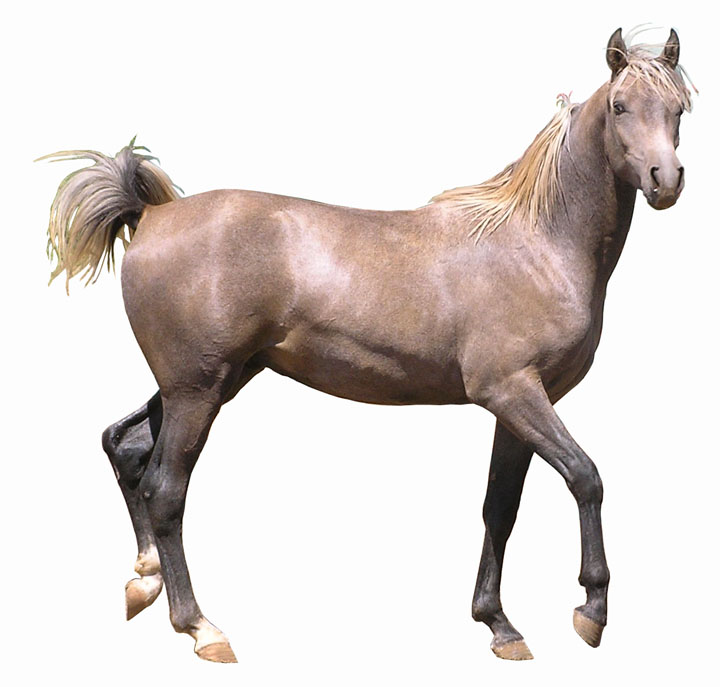
Comar Gai Rifraff
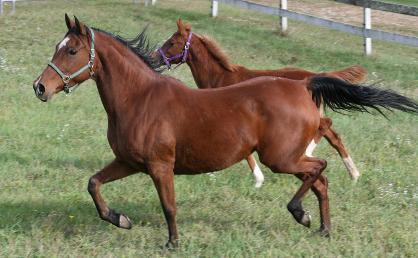
Rroyalee
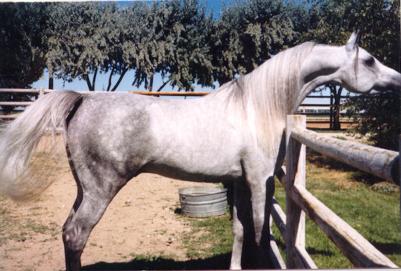
LA Shaman
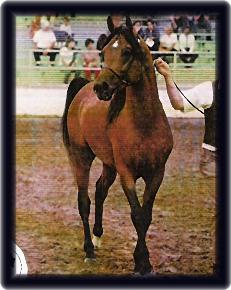
Royale Bay
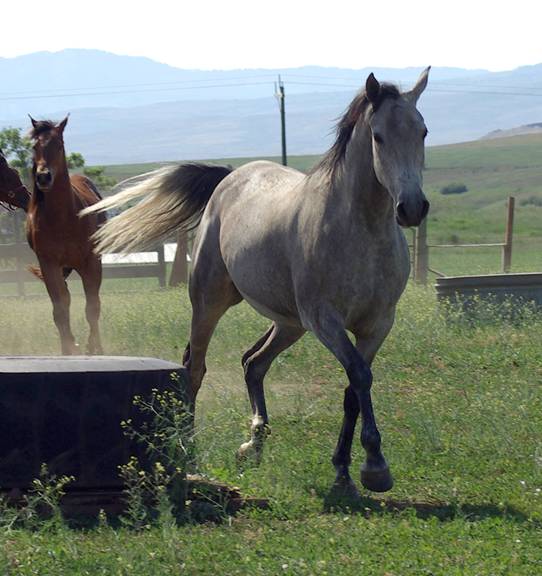
Maur Kemaal
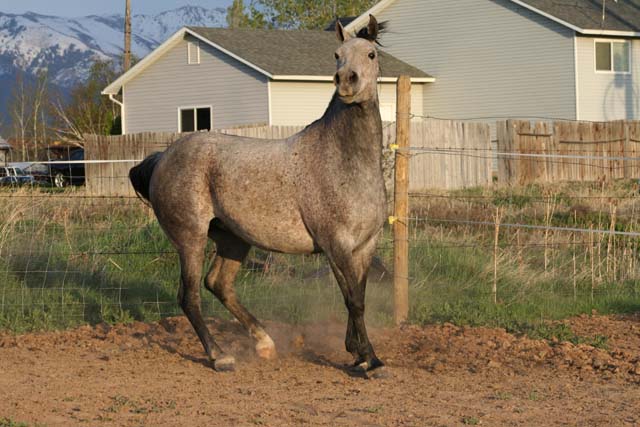
Debbani Al Hadiye
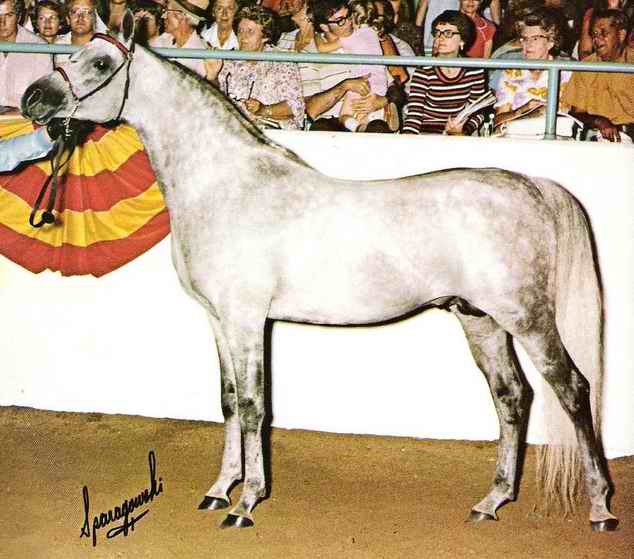
Gai Parada+++/
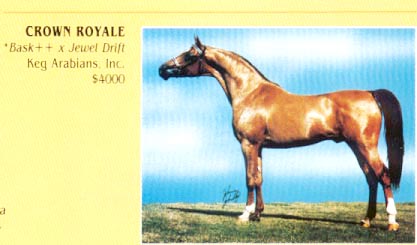
Crown Royale
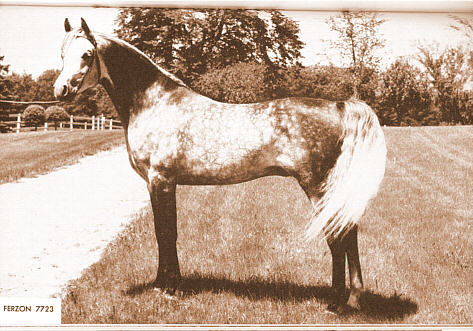
Ferzon
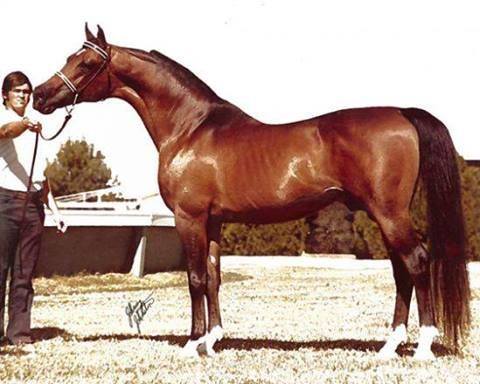
*Bask++
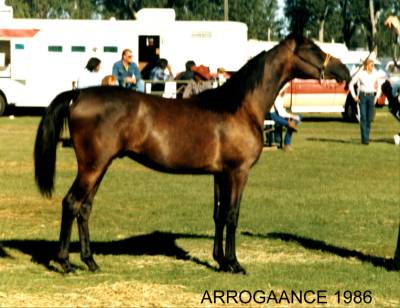
Arrogaance
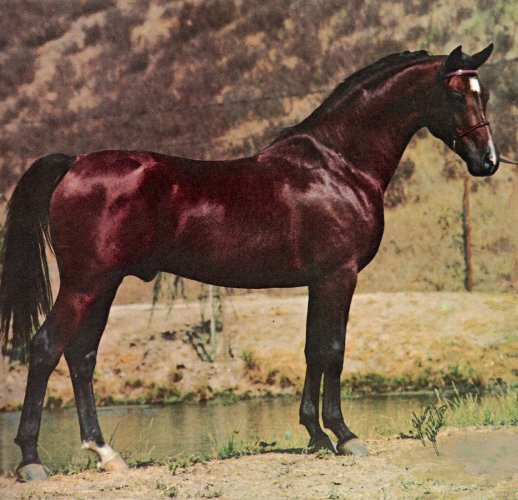
Port Bask
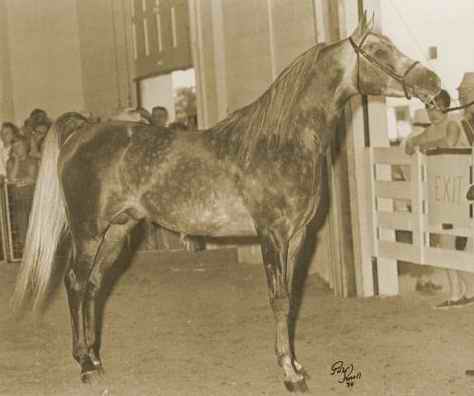
Gay-Rouge
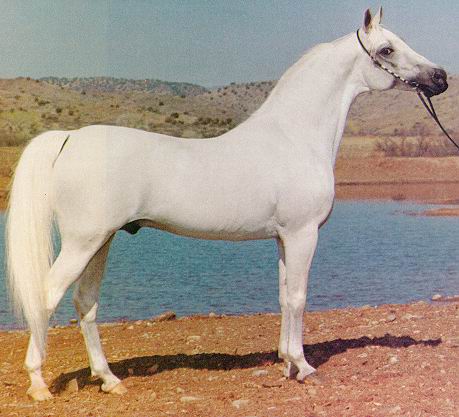
*Naborr
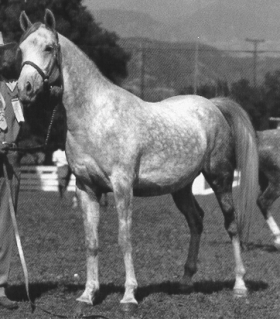
Bint Sahara
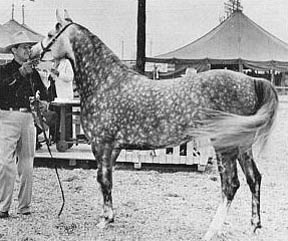
Fersara
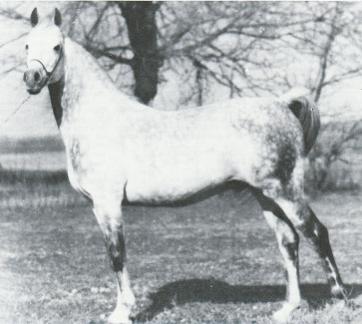
Azraff
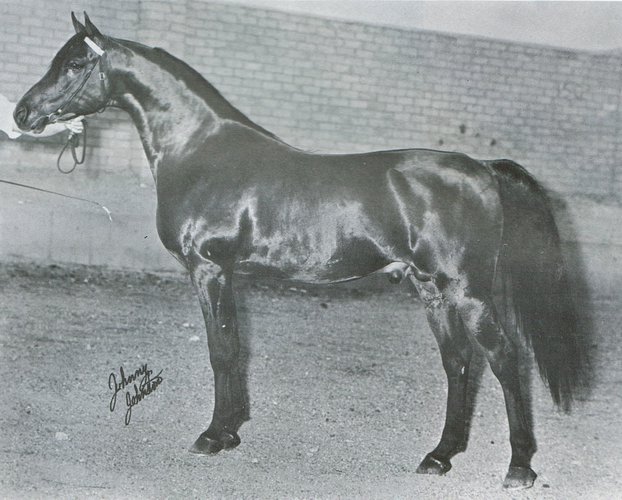
Comar Bay Beau+++
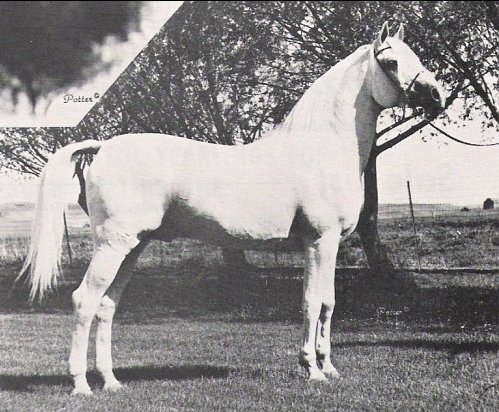
Al-Marah Radames
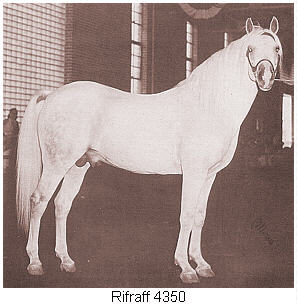
Rifraff
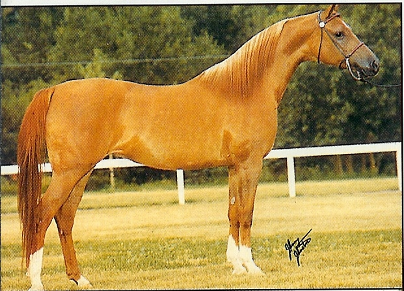
Jewel Drift
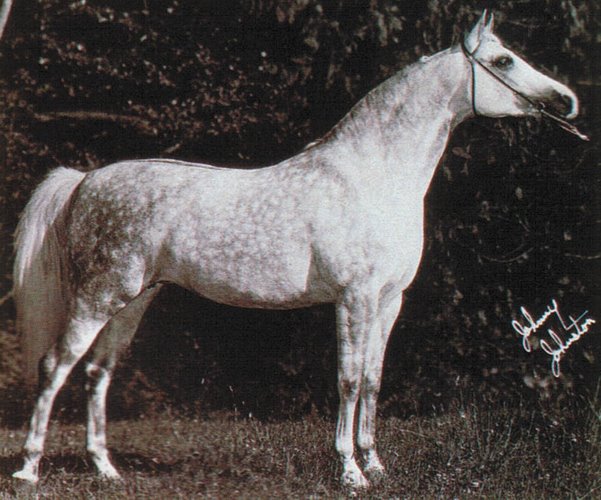
*Dornaba++
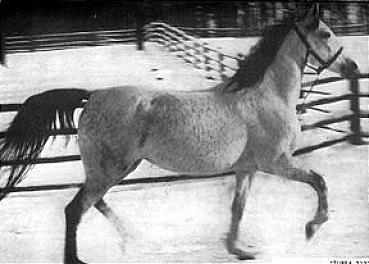
*Turfa
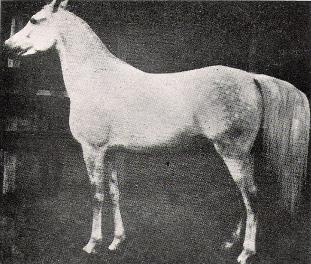
Mahroussa
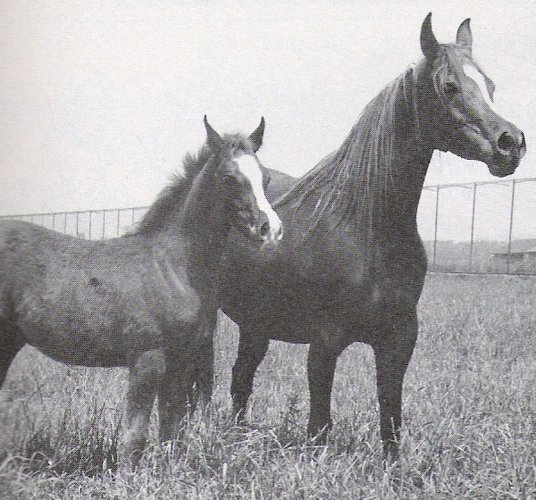
Ghazna
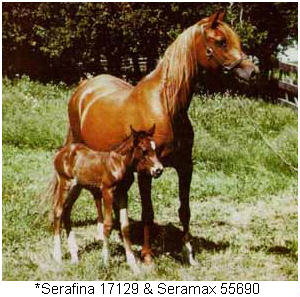
*Serafina
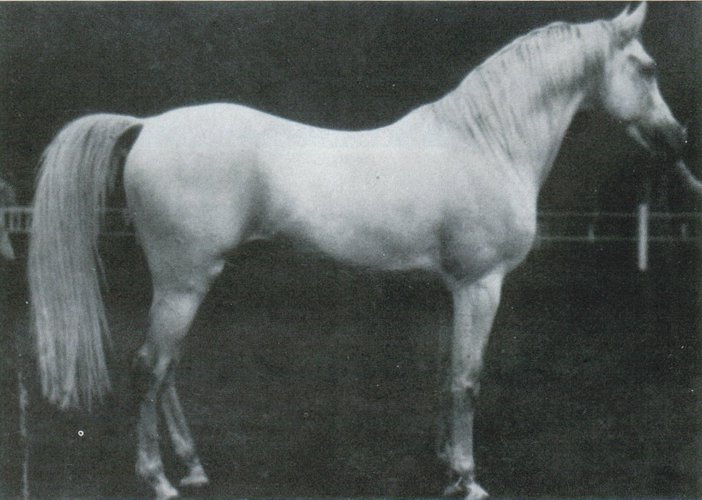
*Nasr
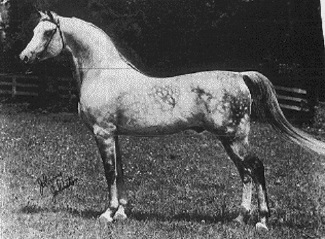
*Silver Drift
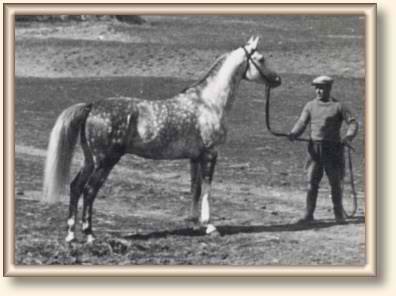
Amurath-Sahib
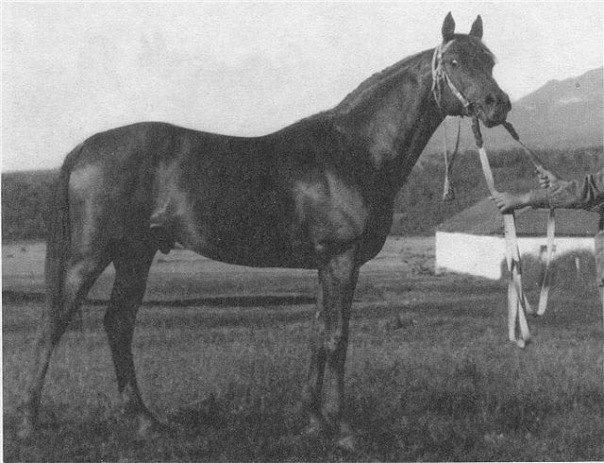
Priboj
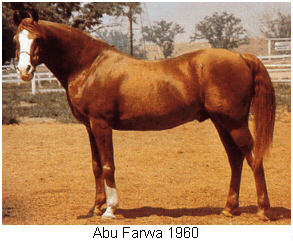
Abu Farwa
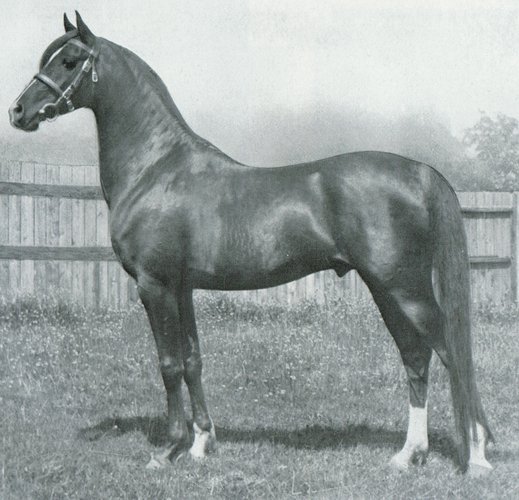
Indian Gold
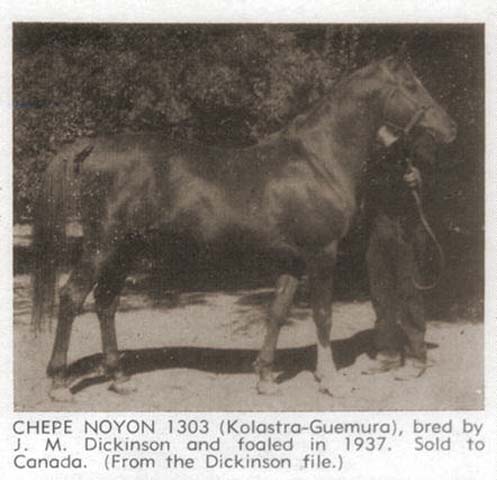
Chepe Noyon
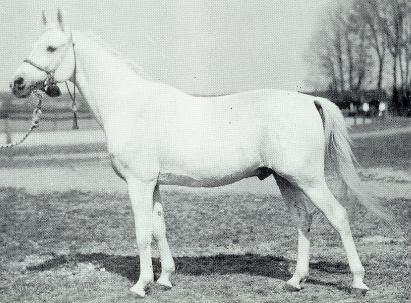
Enwer Bey
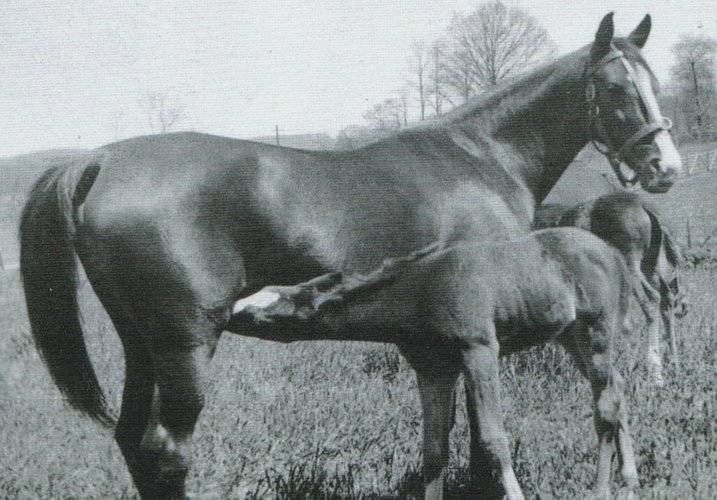
*Exochorda
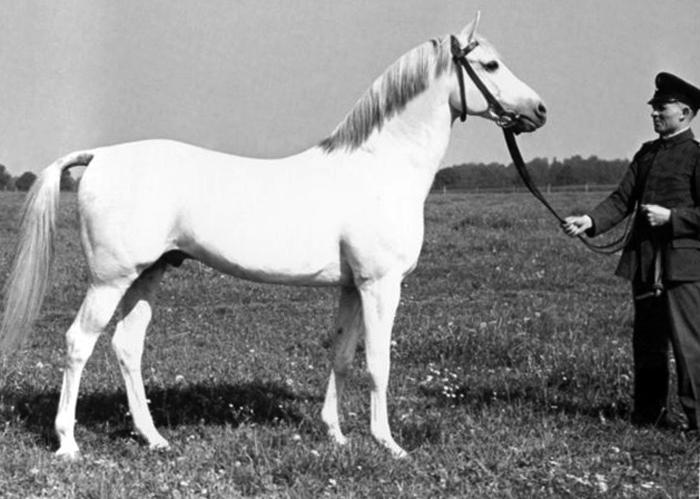
Fetysz
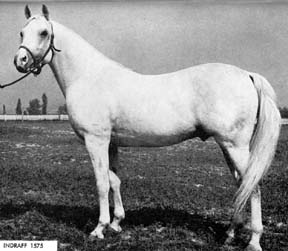
Indraff
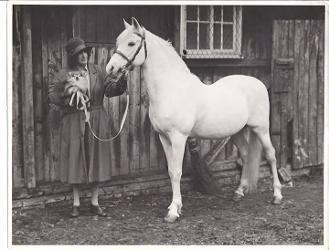
*Mirage
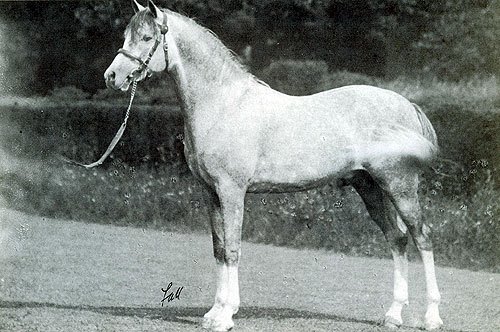
Naseem
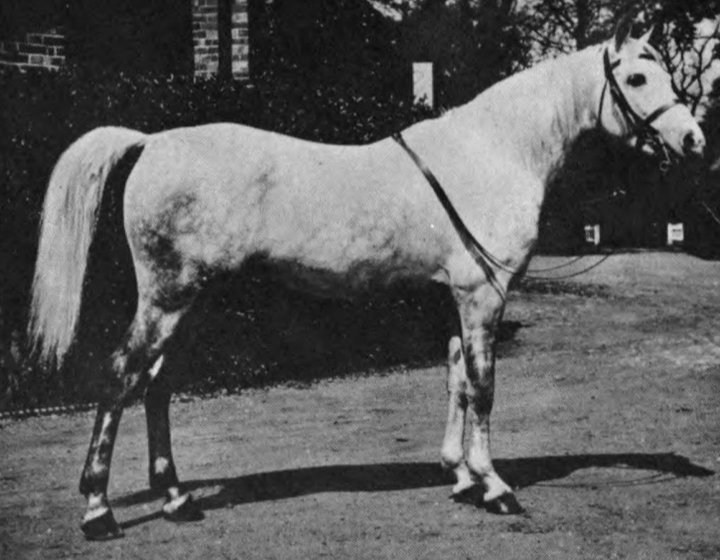
Skowronek
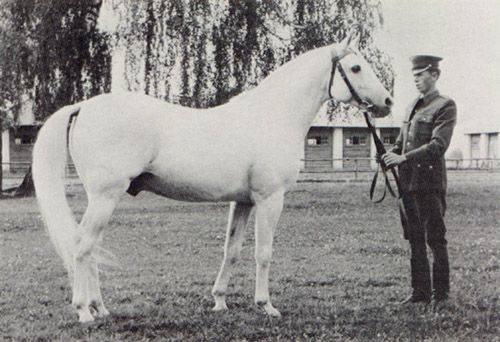
Negatiw
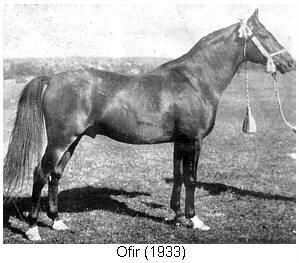
Ofir
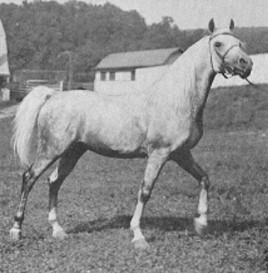
*Raffles
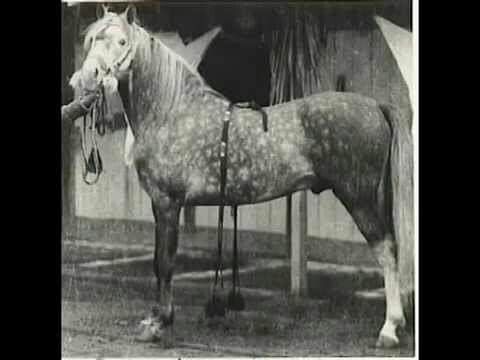
*Raswan
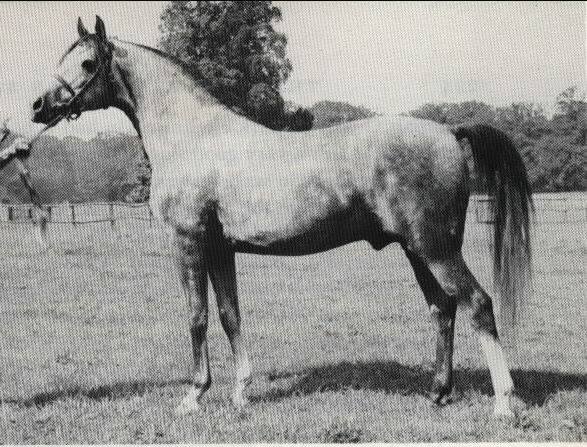
Raktha
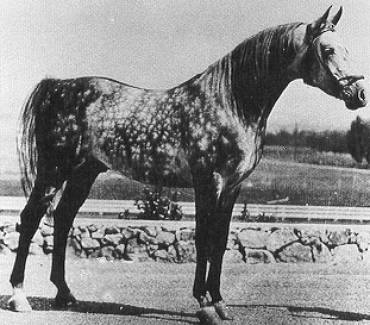
*Raseyn
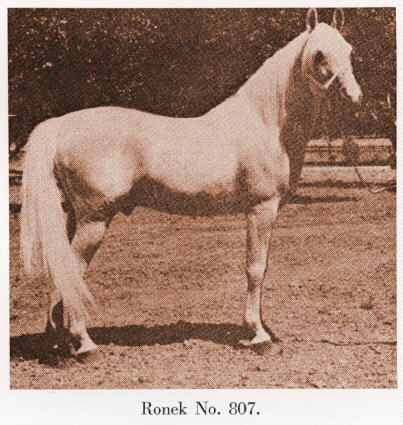
Ronek
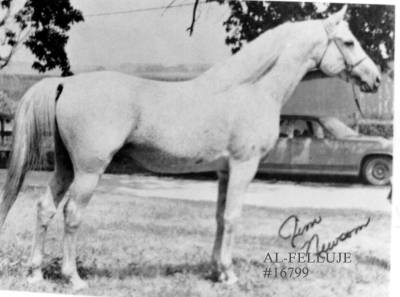
Al-Felluje
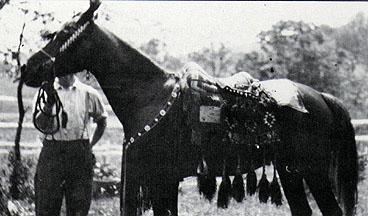
*Wadduda
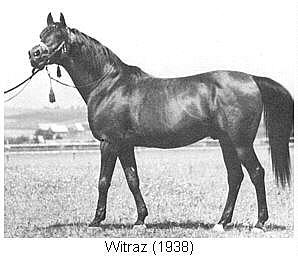
Witraz
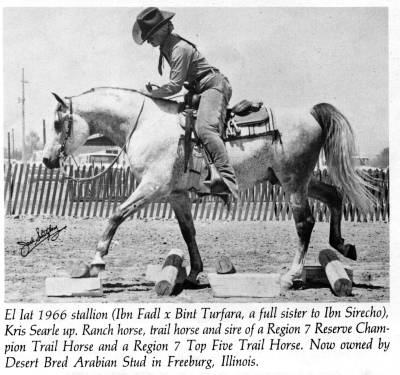
El Iat
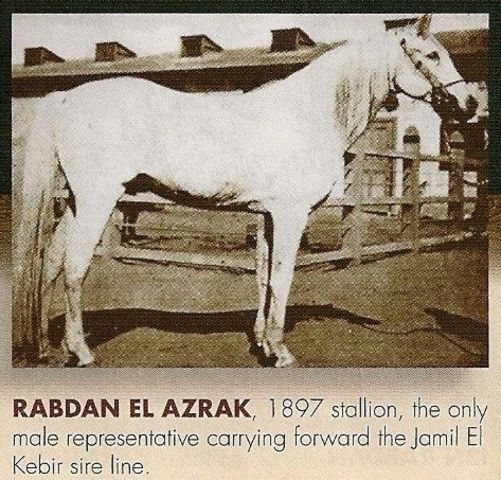
Rabdan El Azrak
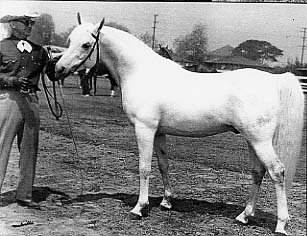
Ferneyn
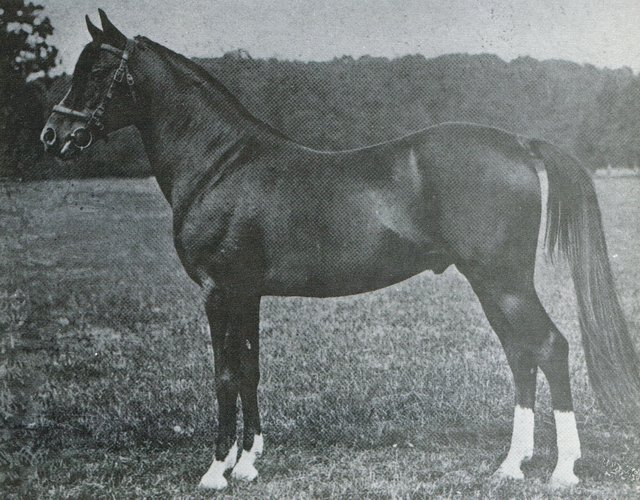
*Berk
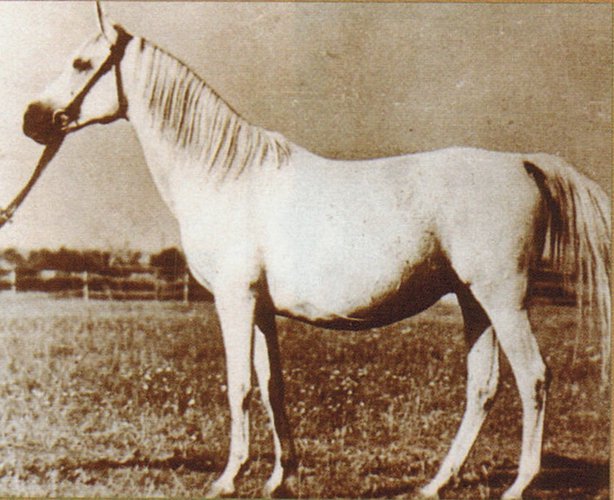
Balalajka
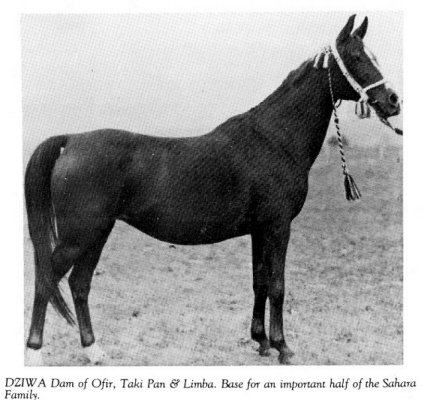
Dziwa
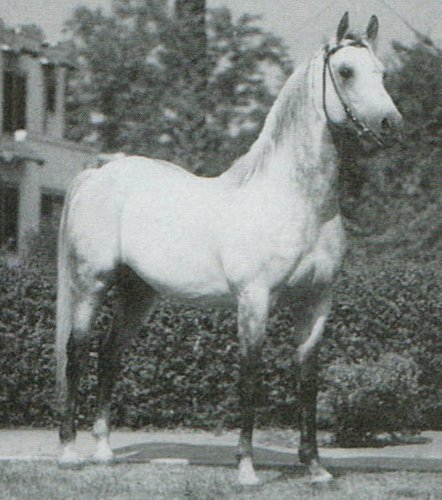
Ferseyn
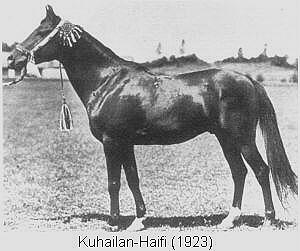
Kuhailan-Haifi
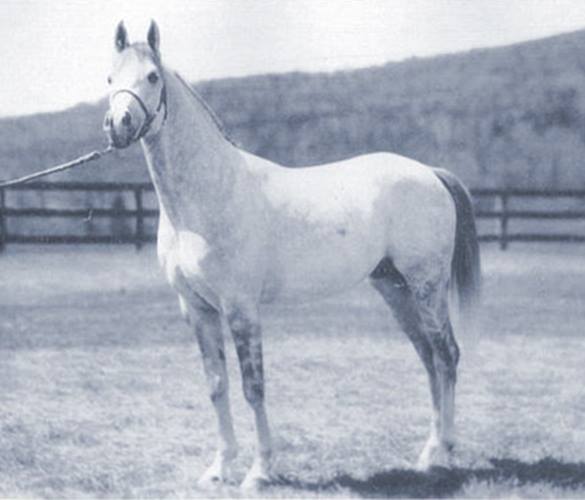
Ghazi
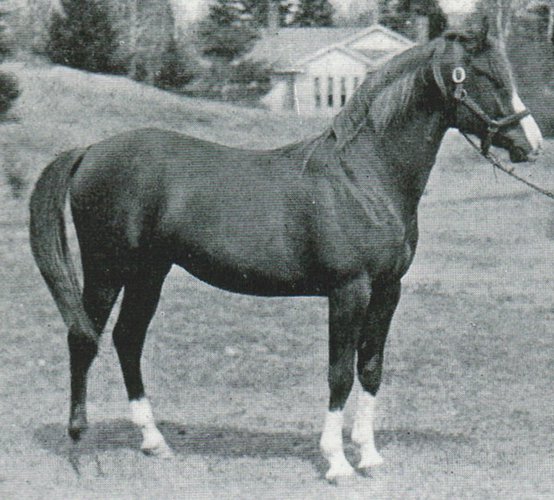
Gulastra
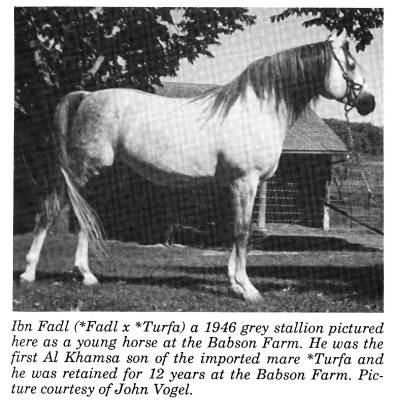
Ibn Fadl
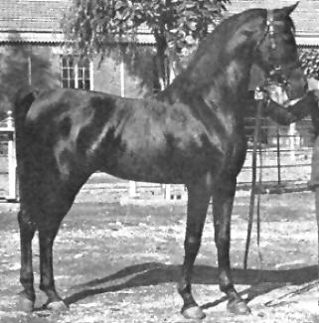
Ibn Rabdan
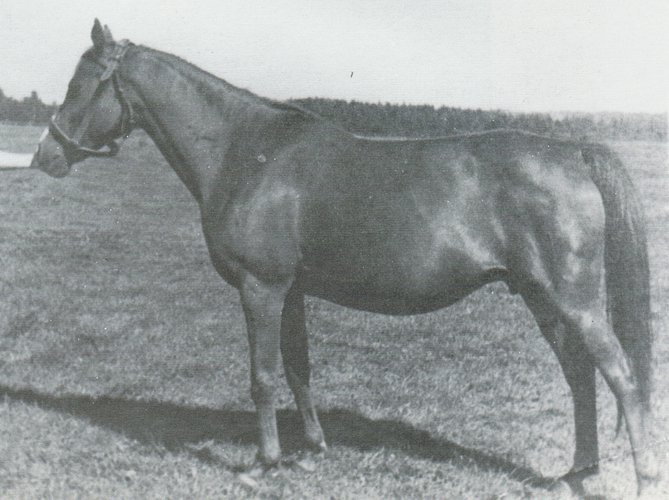
*Iwonka III
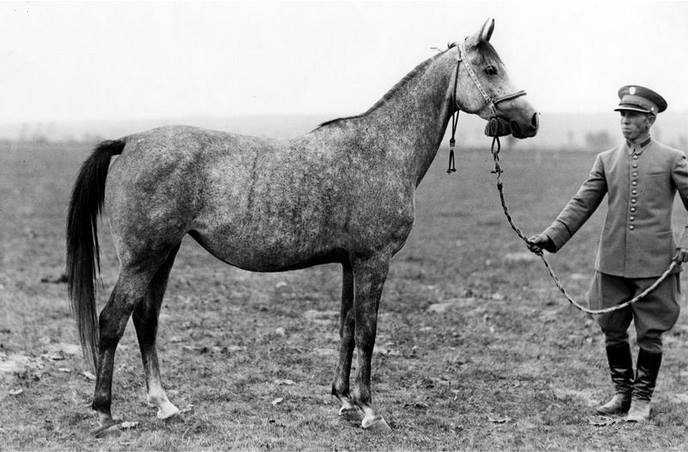
Makata
Pomponia
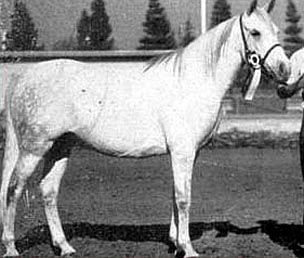
Moneyna
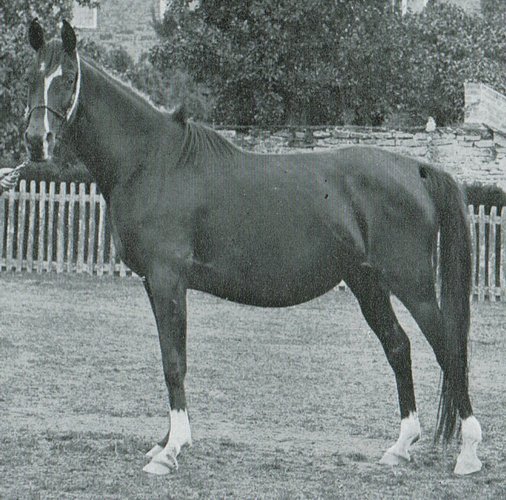
Nefisa
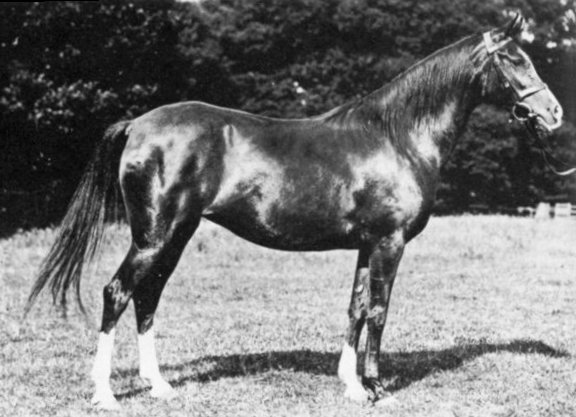
Nasra
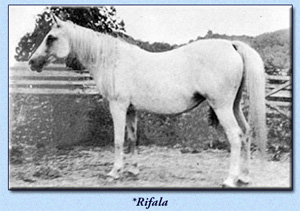
*Rifala
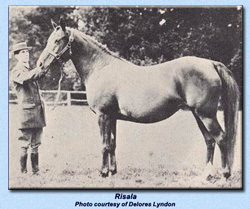
Risala
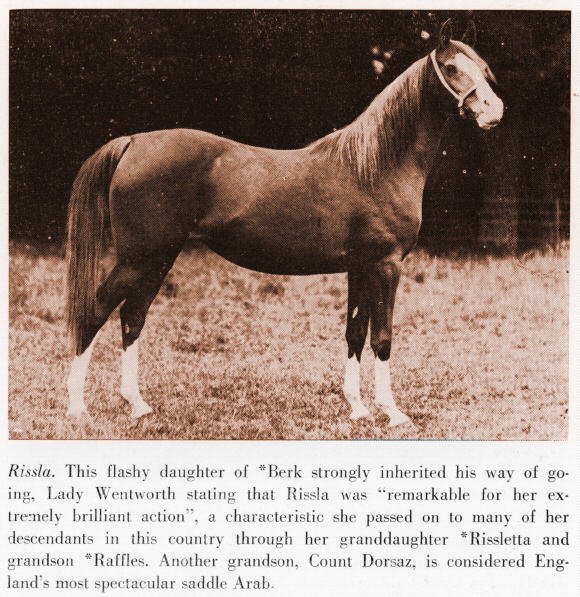
Rissla
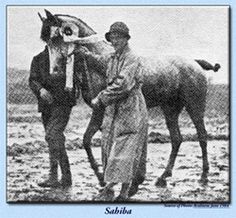
Sahiba
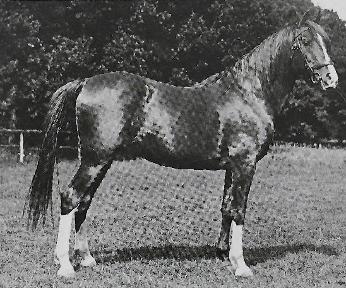
Rijm
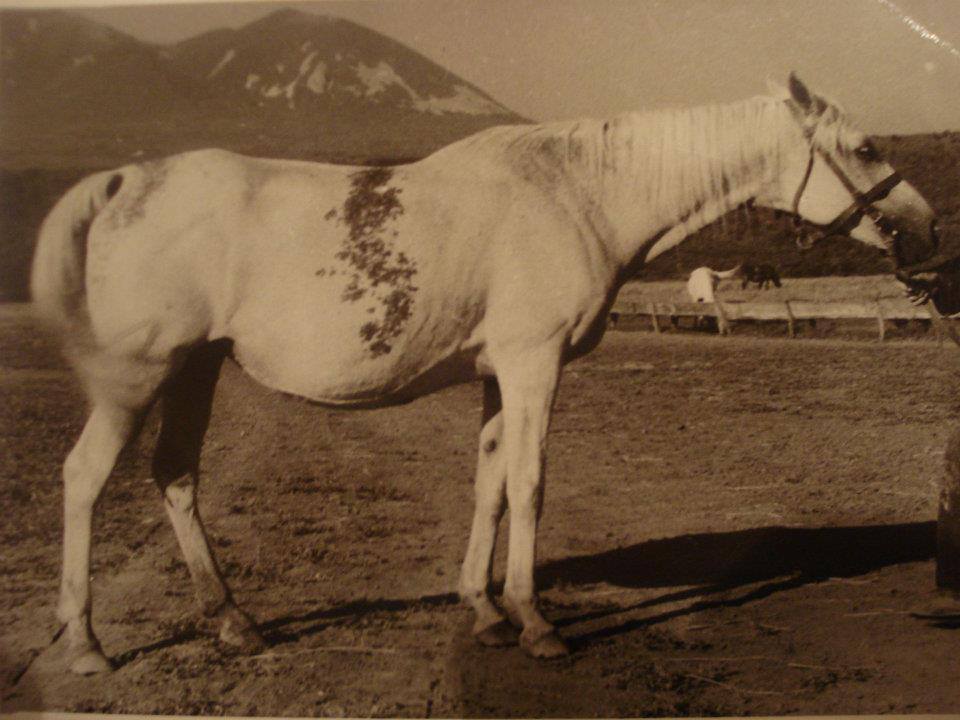
Taraszcza
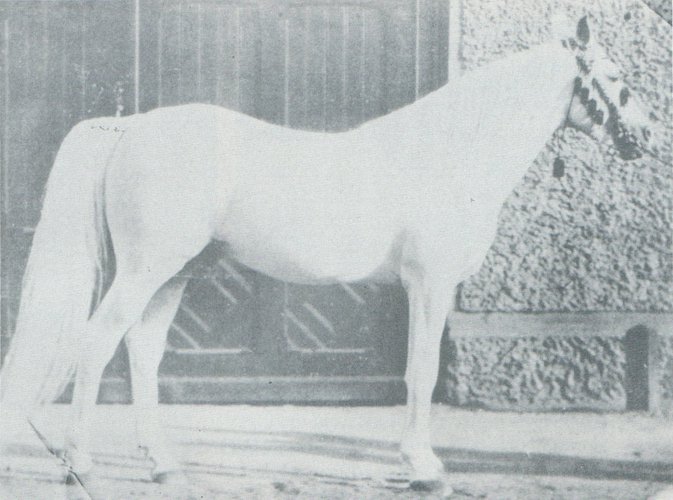
Ibrahim
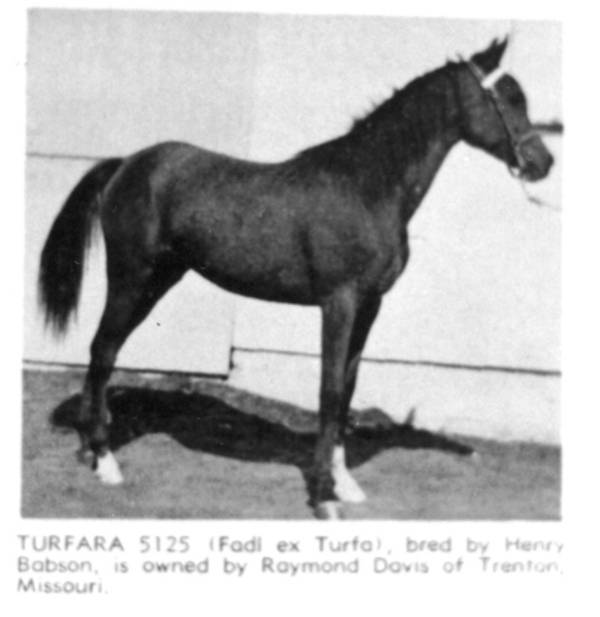
Turfara
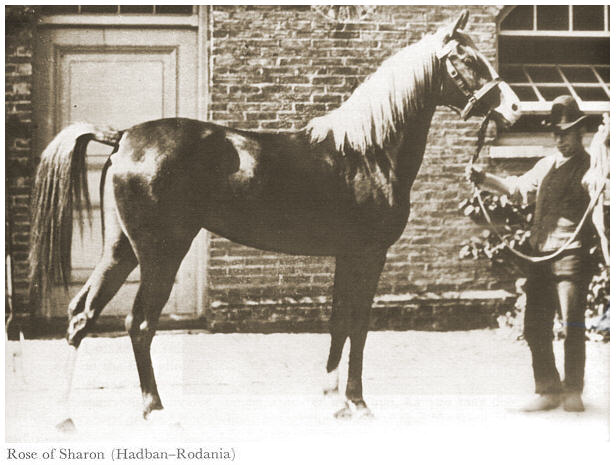
*Rose Of Sharon
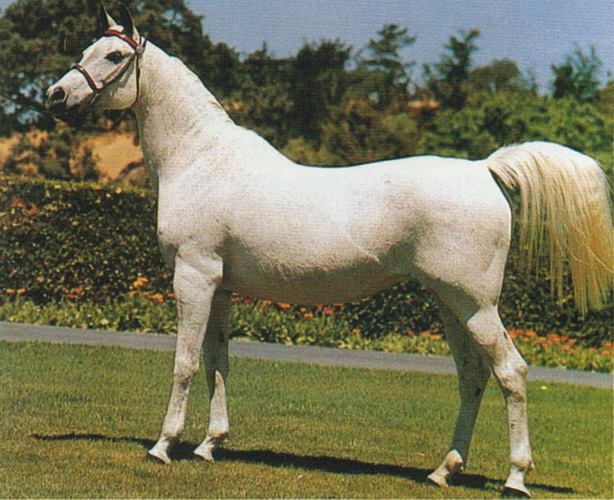
Azleta
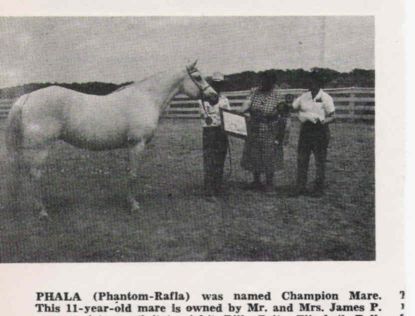
Phala
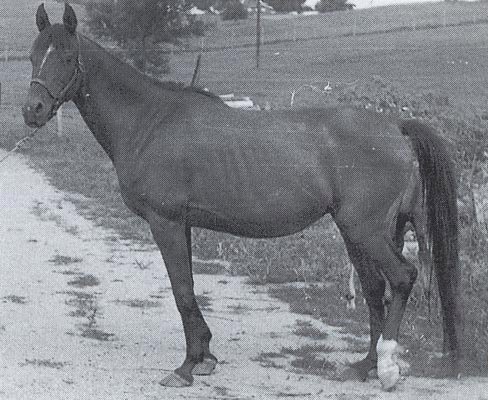
*Azja IV
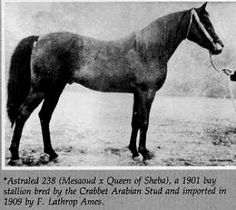
*Astraled
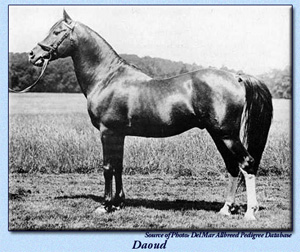
Daoud
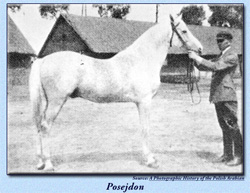
Posejdon
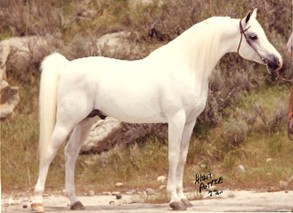
El Glaoui
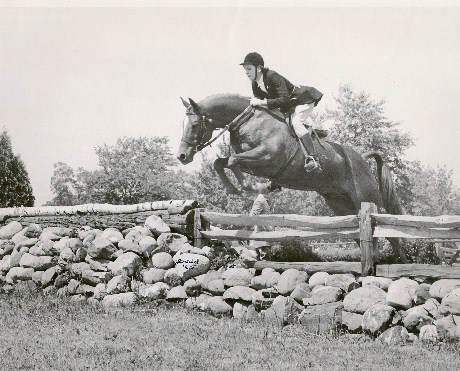
Al-Marah Ibn Indraff
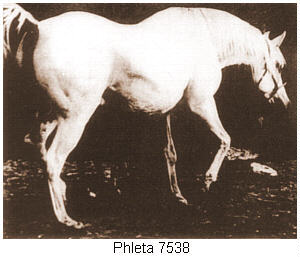
Phleta
